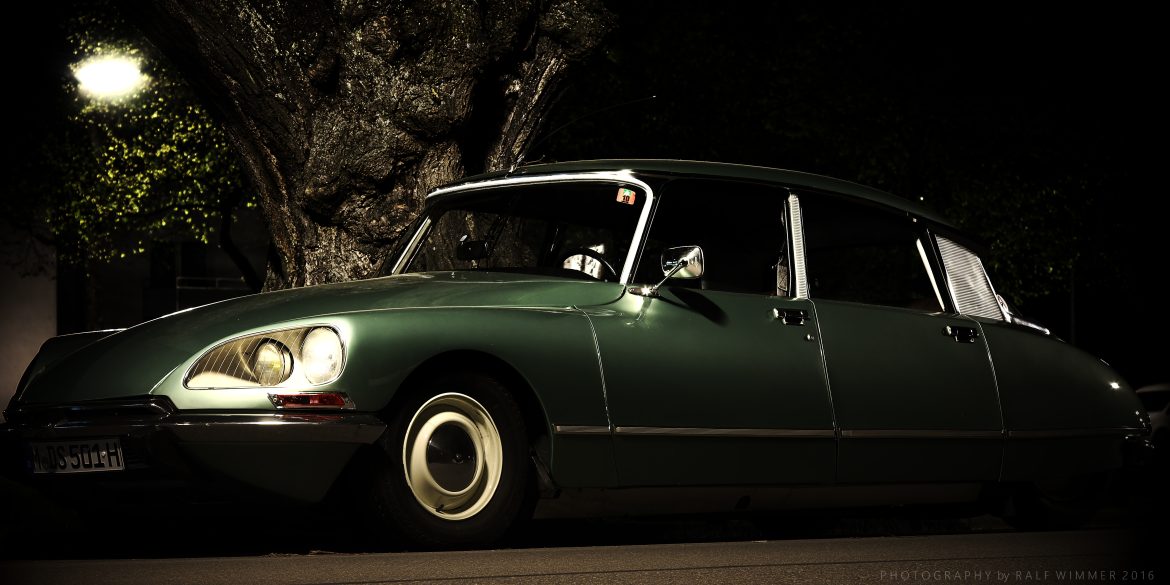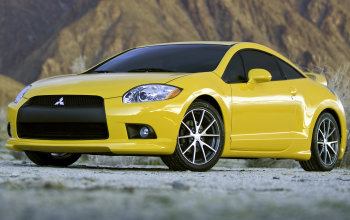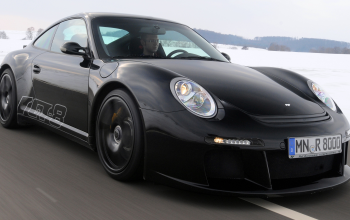A French classic with innovative complex features.
Classic cars are amazing and they are the automotive history on wheels. But the good old Citroen DS cars have more to show and prove that they are more modern or innovative than any other new cars. The DS was also nicknamed Déesse as a pun because of the initials. The word is translated as Goddess.
The French manufacturer has made these rides between 1955 and 1975. First time it was presented at the Paris Motor Show on 6th of October 1955, after they finished the development in secret of this car for 18 years. The main objective was a simple one: to replace the old Citroen Traction Avant.
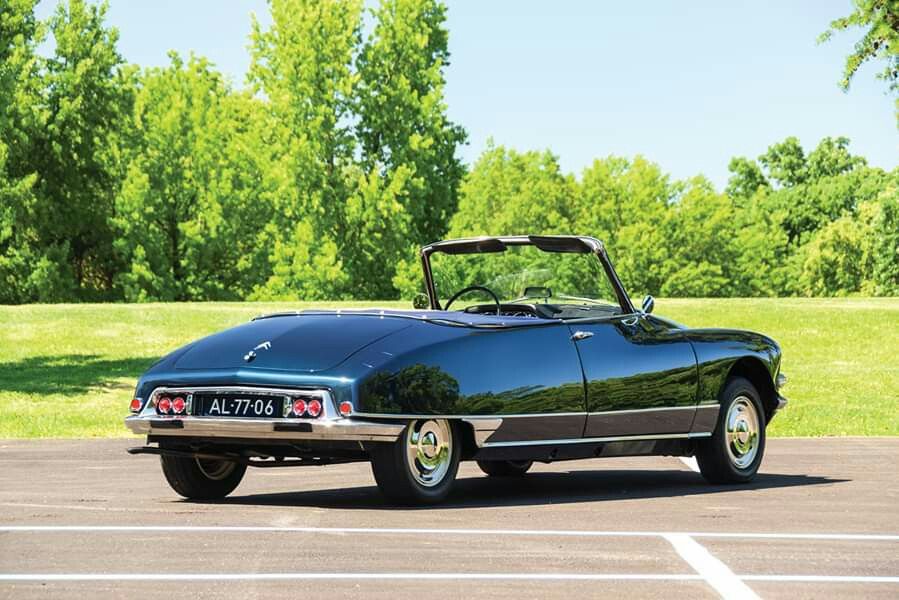
During those 20 years of production, the factory produced the following series: Citroen DS 19, DS 21, DS 23, D Super, D Special, DW (a variant of the car for United Kingdom during 1962-1965) and Citroen ID (a cheaper version of DS for lower budgets also nicknamed Idée, translated as Idea). These French automobiles can be found in numerous body styles: sedan, cabriolet, break/staion wagon called Safari, break ambulance, Currus ambulance (a model with higher roof), Henri Chapron’s coupes, convertibles and sedans (Croisette, Le Leman, Le Dandy, Lorraine, Palm Beach, Majesty, etc.) but also his presidential models, a sportier coupe body designed by Bossaert known as DS GT 19, and there even exists some rear triple axle car haulers known as DS plateau Tissier! Some of these models and variants are common and some are rare, and enthusiasts are looking everywhere, to get one piece to their car collections.
The Déesse as many people likes to call the car model, has a big number of features that today may sound normal and not surprising, but back then it was a brand new premiere and the peak of technology for one vehicle. Citroen equipped the DS with things like: power steering, roof made of fiberglass which reduced weight transfer and lowered the center of gravity, some cars have five bolt wheels while others feature innovative centerlock wheels and the first disk brakes used on a mass-produced car. But before Citroen, disk brakes had already been used before on cars, but they were not successful as the ones from DS. In 1967, when they redesigned the facelift, another feature was added and those were the turning headlights. That means if the car is steering to one direction, the headlights are turning to the steering wheel’s direction. Later in 1969, the electronic fuel injection was included to Citroen DS, also making it one of the first mass-produced cars with electronic fuel injection.
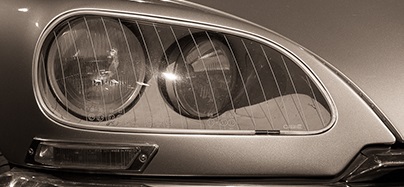
All these features made the car innovative, but what it makes truly unique is the suspension! As you can see most of the cars, both old and new are equipped with shock absorbers, coil springs and leaf springs to their chassis, but not in Citroen DS’s case. It’s having something called hydropneumatic suspension. The system created by French engineer Paul Magès offers a superior ride quality on many types of surfaces. Bad quality and bumpy roads? Not a problem because you will barely feel something while riding the DS. How does it work? The hydropneumatic suspension system contains a belt driven pump from the engine which pressurises a special fluid that powers the suspension, brakes and power steering. The Citroen’s front leading arms and rear trailing arms keeps the wheels on the ground while driving at high speeds on bumpy surface thanks to suspension’s pistons connected to their spheres. Inside those spheres, the pistons controls the amount of fluid, while in harmony with the gas pressure also inside the sphere, does the quality ride provided by the DS.
And to make things even greater, the hydropneumatic suspension is also height adjustable! Why the French manufacturer decided to make their revolutionary suspension height adjustable? They made this decision in order to help the drivers to change the tyres or wheels much easier and faster when needed. The steps are simple and there’s no need for a car jack, just one jack stand. Under the dashboard of the driver’s side exists a lever that adjust the height of the car. Once the lever is set to high, the wheels are still on the ground, then the jack stand must be put around the middle of the wheelbase. After everything is set now the driver must switch the lever to low, and the wheels remains on the air because of the stand. Now it’s time to change the necesary wheel and then the steps above are done vice versa! But sedan models are having the rear wheels covered. That’s no problem at all, because the rear fenders of it are easy to detach! Just one bolt taken out and that’s it!
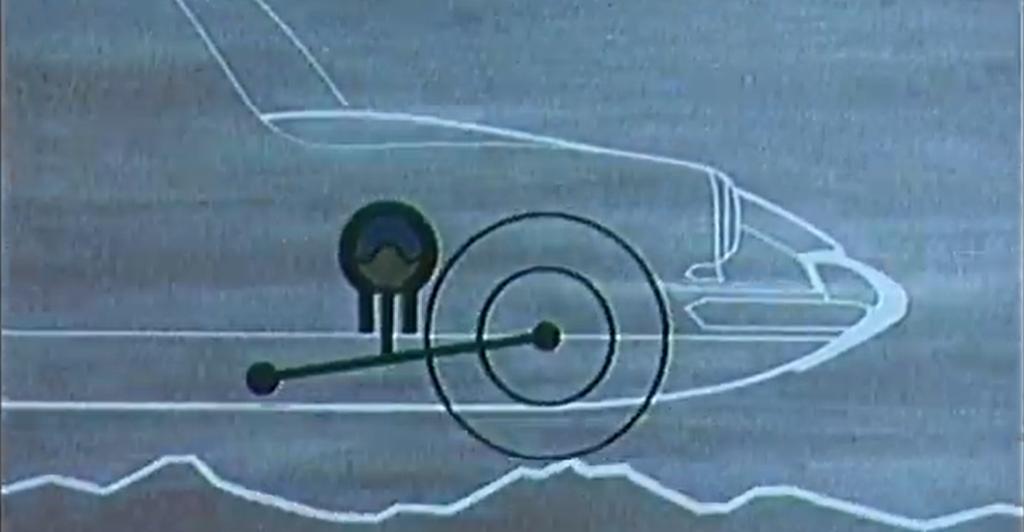
Behind the creation of Citroen DS, I should mention some names that contributed into engineering, developing and design of the automobile. The UFO/flying machine, aerodynamic futuristic style forms and the engineering are done by the French aeronautical engineer, André Lefèbvre and by the Italian industrial designer and former sculptor, Flaminio Bertoni, but the 1967 facelift of the car is made by the French automotive designer Robert Opron. Automobile coachbuilder, Henri Chapron is responsible with the creation of the cabriolet or convertible version of DS which was done through a production agreement with Citroen in 1961. The hydropneumatic self-levelling-suspension is invented and developed by engineer Paul Magès.
And now it’s time to put some words about the engines that are available under the hood! They are placed longitudinal with the gearbox in front, which makes Citroen DS to be a front mid-engine car. Well, despite the innovations of this flying saucer on wheels, the engines were not that good for them in the early ages. The first and smallest engine that’s powering DS is a 1.911 cc, 3 bearing, inline 4, a derive of the 11CV Traction Avant engine. Even for that time, the engine was considered old-fashioned. But with a small modification by placing an aluminium cross-flow head with hemispherical combustion chambers, the engine manages to have 75 HP at 4500 RPM with 137 Nm torque at 3000 RPM, and reaches 145 km/h (90.1 mph). In order to fix the underpower problem, they replaced the engine with a bigger I4, 5 bearing, with a displacement of 1985 cc. This one produces 90 HP at 5250 RPM, 149 Nm at 3500 RPM and runs up to 165 km/h (102.53 mph). The third of the list is a 2175 cc I4, developing 109 HP at 5500 RPM, 174 Nm between 3000-3500 RPM, with a maximum speed of 175 km/h (108.74 mph). Atfer the addition of the electronic fuel injection by Bosch, the specs of the engine are increased. Now with 125 HP at 5250 rpm and 183 Nm at 2500 RPM, the speed gets higher up to 188 km/h (116.82 mph). And the last and biggest engine is the 2347 cc inline 4. The carbureted version haves 115 HP at 5500 RPM, 183 Nm at 3500 RPM and top speed of 179 km/h (111.23 mph), while the fuel injected one gets 130 HP at 5250 RPM, 195 Nm at 2500 RPM, reaching the top speed of 188 km/h (116.82 mph).
There are also 4 types of gearboxes for the Citroen DS. The 3 speed gearbox is automatic, the 4 and 5 speed ones are manual, and another 4 speed gearbox that’s semi-automatic. How the semi-automatic gearbox works? While shifting the gears, the shift lever controls a powered hydraulic mechanism instead of a mechanical linkage and you don’t need to hit the clutch pedal.
When this car was developed, the driver and passangers safety was a priority for the engineers. The doors of the Citroen DS are frameless to reduce the blindspots. The steering wheel of the automobile has only one spoke for an increased space of the rib cage in case of an accident. Thanks to its hydropneumatic and self-levelling-suspension, Citroen can run on the road with only three wheels, and also, when the tyre or more tyres gets punctured, the car remains on the road without losing balance, avoiding any risk of crash.
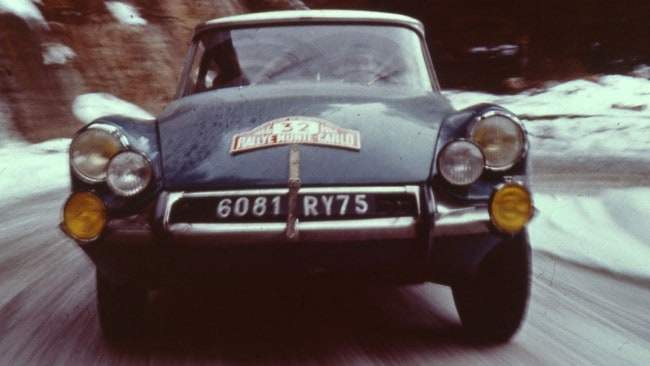
The performance of the models made by the French car maker, are successfully seen into motorsports. For a front wheel drive car, DS had great results in rally races. In 1959, a Citroen ID19 won the Monte Carlo Rally. Later in 1963, same rally, a DS19 finished second, driven by the finnish rally driver, Pauli Toivonen, then he drove a DS21 in 1966 which gave him the first place victory. Pauli Toivonen also was also racing the DS19, in 1000 Lakes Rally (today under the name of Rally Finland) and finished second place in 1961 and first place in 1962. Robert Neyret, a French rally driver, has won twice Rallye du Maroc (Morocco Rally) in 1969 and 1970 thanks to his modified Citroen DS. One more time the frech DS23 finished victorious with an Australian team, at the London–Sahara–Munich World Cup Rally from 1974.
The last Citroen DS was made in April of the year 1975. The interior of it was considered narrow for the 70’s demands and production ended after 2 entire decades, to give launch of the next model, the Citroen CX. Around 1.330.755 units were build in France, and 1.455.746 were built worldwide, being assembled in Portugal, United Kingdom, former Yugoslavia (today in Slovenia), Australia and South Africa. Citroen DS was placed third in the Car of the Century award of 1999, second place being the British Mini, and first place being the American Ford Model T.

